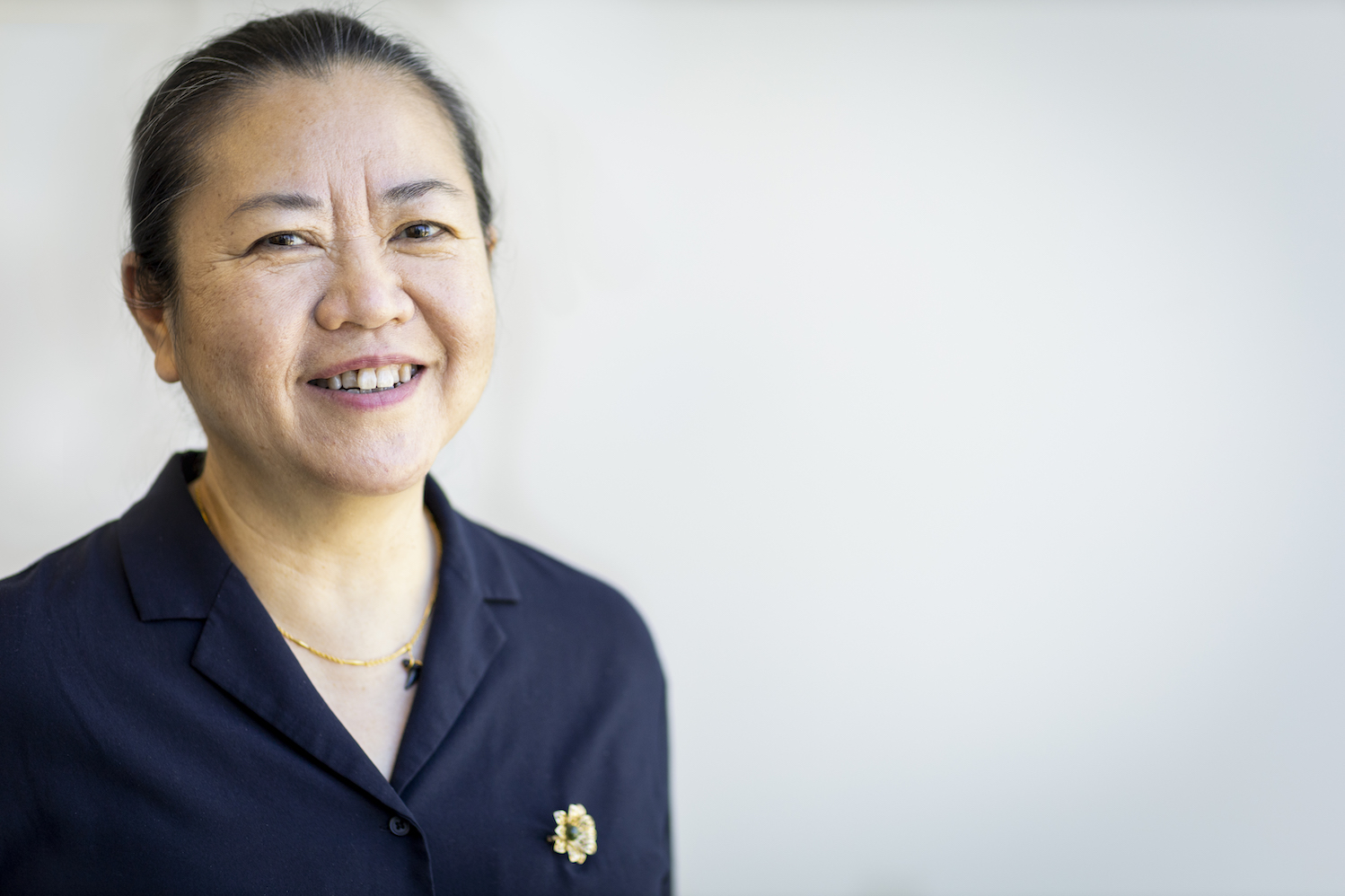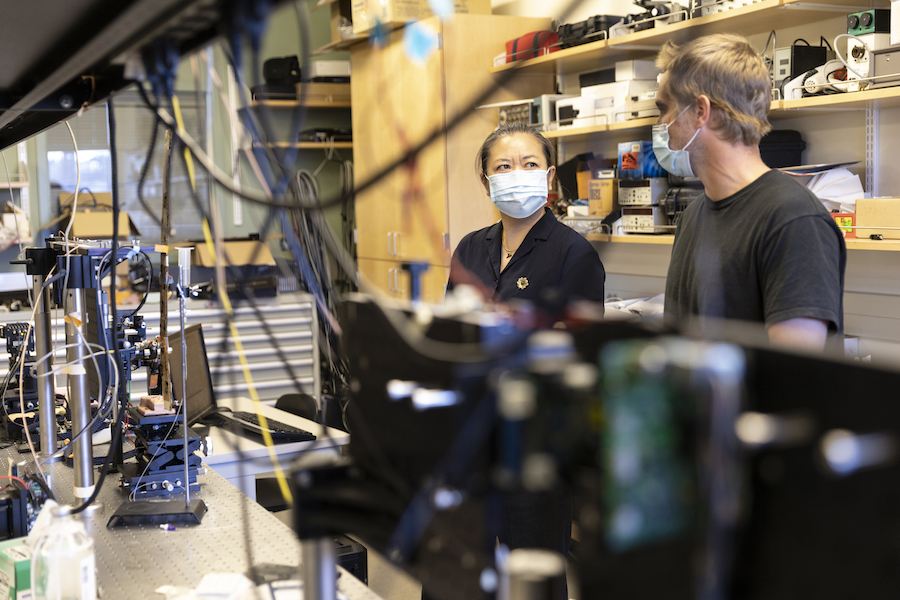The College of Engineering and UW School of Medicine have created a position to expand health innovation. Meet Dr. Tueng Shen, the first to serve in this role.
The College of Engineering and the UW School of Medicine have a long history of working together to advance health care research and innovation. Last fall, the two schools took their partnership to a new level by developing a shared leadership position: associate dean of medical technology innovation. This position will bring together engineering and medical researchers to expand health innovation at the UW and build long-term relationships between researchers and industry, nonprofits and community organizations.

Dr. Tueng Shen, Associate Dean of Medical Technology Innovation. Photo by Dennis Wise / University of Washington.
Tueng Shen, a professor of ophthalmology and adjunct professor in bioengineering and global health, is the first to serve in this new role. With degrees in engineering and medicine — Shen holds a Ph.D. in medical engineering and medical physics from the Massachusetts Institute of Technology (MIT) and a M.D. from Harvard Medical School — and years of experience in patient care and technology innovation, she has worked throughout her career to bring together physicians and engineers to shape the future of health care.
The College of Engineering’s Chelsea Yates recently spoke with Shen — who holds the Graham and Brenda Siddall Endowed Professorship in cornea research — about her path to engineering and medicine and how she’s working to expand health innovation as associate dean.
What led you to study engineering and medicine?
I immigrated to the U.S. with my family when I was 18 years old, speaking only Chinese. In college I took a lot of math, physics, computer science and studio art courses while catching up on English. I realized the power of the languages of science and art in communicating with others.
I was certain about studying engineering but not sure about clinical medicine until my Ph.D. training at MIT when I was required to take an Introduction to Clinical Medicine course. Talking to patients gave me a new perspective about the potential impact of my research, and that resonated with me. I decided to pursue medical training after finishing my engineering degree. For me it was a great opportunity to learn a new language.
Why did you decide to focus on eye care?
In medical school I discovered that I loved surgery and was drawn to ophthalmology — a surgical subspecialty focused on improving vision with great impact on the quality of life. Plus, as a field, ophthalmology had a history of adapting new technologies very quickly and successfully. So it was a natural fit for me.
We’re located in a vibrant innovation community, and we have excellent engineering and medical schools. I believe that building more bridges across the schools will catalyze innovation and transform health care.”
— Dr. Tueng Shen
You’ve led several projects that bridge research technology and patient care. Tell us about some of them.
Early in my career at the UW, I partnered with engineering researchers to build a contact lens with wireless sensors that could monitor diseases like diabetes. This project continues today at Google. I’ve also worked with engineering colleagues, especially Buddy Ratner in bioengineering, to create biomaterials and build artificial corneas to help treat global blindness. Most recently we are exploring new ways to characterize corneal biomechanics using innovative ultrasound and imaging technologies developed by bioengineering researchers Matt O’Donnell, Ivan Pelivanov and Ricky Wang. These collaborations not only develop new technologies to improve patient care, but also create valuable training environments for our students to become tomorrow’s leaders in industry, academia and medicine.
What drew you to the associate dean role?
The COVID pandemic has shown us how interconnected and interdependent we all are and how important it is for all of us to be healthy, both physically and mentally. And while scientists discovered vaccines at lightning speed, we also uncovered glaring health disparities. I believe we’re entering a new era of health and health care, where commitment to health equity is a must. Medical technology innovation is critical to solving this global challenge. Engineers and physicians must be at the heart of this transformation together. I feel very fortunate to serve in this role and help guide this work.
The UW is poised to be a leader in health equity and innovation. We’re located in a vibrant innovation community, and we have excellent engineering and medical schools — both of which have been my home since I came to the UW in 2003. I believe that building more bridges across the schools will catalyze innovation and transform health care. There are excellent cross-disciplinary programs already in place, such as Engineering Innovation in Health and the Master of Applied Bioengineering program. I’m eager to make broad collaborations the norm at the UW.

“As a clinician engineer, my ability to communicate across disciplines has allowed me to always position my research at the intersection of engineering and medicine,” says Shen, left, here in her lab with bioengineering graduate student Mitchell Kirby. Photo by Dennis Wise / University of Washington.
How does having an engineering background enhance your clinical practice, and how does being a medical doctor impact your work as an engineer?
To this day I practice medicine with the mindset of an engineer. As a physician, I’m constantly asking if our discoveries and solutions are meeting the needs of our patients. It can seem that engineers and clinicians speak different languages. As a clinician engineer, my ability to communicate across disciplines has allowed me to always position my research at the intersection of engineering and medicine.
What advice do you have for engineering students and faculty who want to deepen their experience with health care innovation?
Remember engineers and clinicians share the same goal: to help people and to improve society. For engineering students, exposure to health-care environments, such as in clinics and operating rooms, will help you communicate with clinician partners. I plan to create more opportunities for engineering students to explore the world of medicine. I’m here as a resource and my role is to facilitate, so please reach out.
Health and medicine research at the UW College of Engineering
Engineering and health is a key research area at the College. Learn more about other vital work happening in this sector.
Originally published August 16, 2021